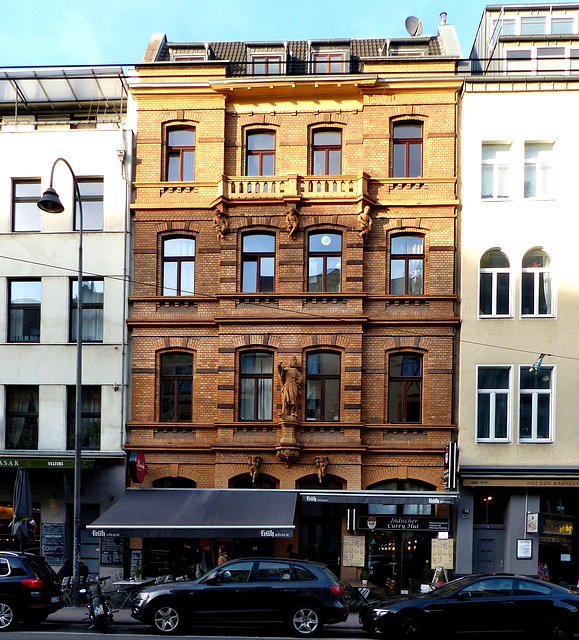Cologne - Panorama
Cologne - Messeturm
Cologne - Hohenzollernbrücke
Cologne - Cathedral
Cologne - St. Clemens
Cologne - Händelstrasse
Cologne - Zoo
Cologne - Kunibertsturm
Cologne - Zarathustra
Cologne - St. Engelbert
Cologne - St. Engelbert
Cologne - Remagen & Thurn
Cologne - Cathedral
Cologne - Cathedral
Cologne - Carnival
Cologne - Carnival
Cologne - Carnival
Cologne - Carnival
Cologne - Carnival
Cologne - Carnival
Cologne - Carnival
Cologne - Herz Jesu
Cologne - Herz Jesu
Cologne - Heilig Kreuz
Cologne - Bruno Wolkenaer
Cologne - Bikes
Cologne - Ludari
Cologne - Südbrücke
Cologne - Trimbornstrasse
Cologne - Berger + Sohn
Cologne - Panorama
Cologne - Metzgerei Reintgen
Cologne - Cathedral
Cologne - Haus des Tanzes
Cologne - Gustav Brock
Cologne - Zugweg
Cologne - St. Nikolaus
Cologne - St. Nikolaus
Cologne - Weisshaus
Cologne - Edmund Bosen
Cologne - Edmund Bosen
Cologne - Kalscheurer-Weiher
Cologne - Cathedral
Cologne - Schulze-Delitzsch Strasse
Cologne - St. Mariä Empfängnis
Location
See also...
Keywords
Authorizations, license
-
Visible by: Everyone -
All rights reserved
-
127 visits
Cologne - Aachener Strasse


Cologne is the fourth-largest city in Germany - and one of the oldest. A Germanic tribe, the Ubii, had a settlement here, this was named by the Romans "Oppidum Ubiorum". In 50 AD, the Romans founded "Colonia Claudia Ara Agrippinensium", the city then became the provincial capital of "Germania Inferior".
During WWII Cologne was bombed in 262 separate air raids. In April 1945, when the American armee reached Cologne, the city was completely ruined. About 90% of all houses in the inner city were - gone. In 1939 Cologne had had a population of more than 700.00. In spring 1945 there were only about 40.000, living in the ruins. So most of the buildings in Cologne are pretty "young".
This well restored brick building (Aachener Str. 16) - just opposite the "Volksbuehne" (ex "Millowitsch Theater") - has an extravagant facade. I could not find out, who is depicted by the large figure. My first guess was Gambrinus, as his hand seems to hold a (beer-)glass, but at the moment I think it could be Arminius, who commanded the Germanic tribes when they crushed the Roman armee in the Battle of the Teutoburg Forest in 9 AD. Arminius (= Hermann) became an emblem of the revival of German nationalism in the 19th century.
During WWII Cologne was bombed in 262 separate air raids. In April 1945, when the American armee reached Cologne, the city was completely ruined. About 90% of all houses in the inner city were - gone. In 1939 Cologne had had a population of more than 700.00. In spring 1945 there were only about 40.000, living in the ruins. So most of the buildings in Cologne are pretty "young".
This well restored brick building (Aachener Str. 16) - just opposite the "Volksbuehne" (ex "Millowitsch Theater") - has an extravagant facade. I could not find out, who is depicted by the large figure. My first guess was Gambrinus, as his hand seems to hold a (beer-)glass, but at the moment I think it could be Arminius, who commanded the Germanic tribes when they crushed the Roman armee in the Battle of the Teutoburg Forest in 9 AD. Arminius (= Hermann) became an emblem of the revival of German nationalism in the 19th century.
- Keyboard shortcuts:
Jump to top
RSS feed- Latest comments - Subscribe to the comment feeds of this photo
- ipernity © 2007-2024
- Help & Contact
|
Club news
|
About ipernity
|
History |
ipernity Club & Prices |
Guide of good conduct
Donate | Group guidelines | Privacy policy | Terms of use | Statutes | In memoria -
Facebook
Twitter

Sign-in to write a comment.